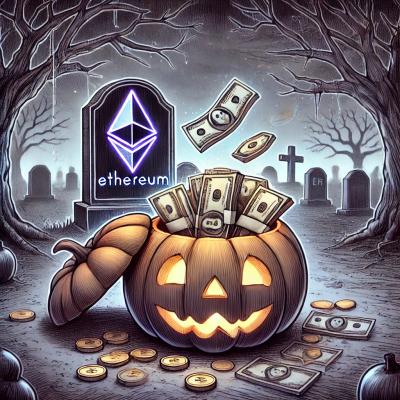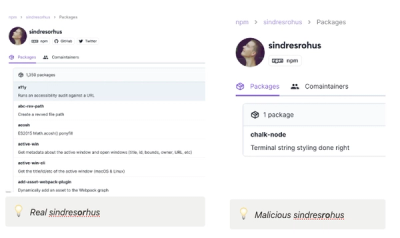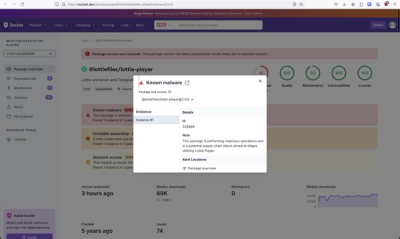angular-mydatepicker
Angular datepicker and date range picker


Browser support (tested)
| Chrome | Firefox | Edge | IE11 | Safari | iOS Safari |
|---|
| :heavy_check_mark: | :heavy_check_mark: | :heavy_check_mark: | :heavy_check_mark: | :heavy_check_mark: | :heavy_check_mark: |
Description
Highly configurable Angular datepicker and date range picker. No dependencies to other libraries.
This project was generated with Angular CLI version 7.3.8. The library is tested with Angular version 7.2.0.
Source code of the datepicker is in the projects/angular-mydatepicker/src folder.
Online demo is here
Installation
To install this component to an external project, follow the procedure:
-
npm install angular-mydatepicker --save
-
Add AngularMyDatePickerModule import to your @NgModule as follows
import { BrowserModule } from '@angular/platform-browser';
import { NgModule } from '@angular/core';
import { FormsModule, ReactiveFormsModule } from '@angular/forms';
import { AngularMyDatePickerModule } from 'angular-mydatepicker';
@NgModule({
declarations: [
AppComponent
],
imports: [
BrowserModule, ReactiveFormsModule, FormsModule, AngularMyDatePickerModule.forRoot()
],
providers: [],
bootstrap: [AppComponent]
})
export class AppModule { }
Usage
Use one of the following two options. The examples below use the bootstrap and the font-awesome, but you can use datepicker also without them.
1. ngModel binding
In this option the ngModel binding is used.
To use ngModel define the application class as follows:
import {IAngularMyDpOptions, IMyDateModel} from 'angular-mydatepicker';
export class MyTestApp {
private myOptions: IAngularMyDpOptions = {
dateRange: false,
dateFormat: 'dd.mm.yyyy'
};
private model: IMyDateModel = null;
constructor() { }
onDateChanged(event: IMyDateModel): void {
}
}
If you are using bootstrap 4 add the following snippet inside your template:
- example adds bootstrap input group and font-awesome icons
<div class="input-group">
<input class="form-control" placeholder="Select a date" angular-mydatepicker name="mydate"
[(ngModel)]="model" [options]="myOptions" #dp="angular-mydatepicker" (dateChanged)="onDateChanged($event)"/>
<div class="input-group-append">
<button type="button" class="btn btn-secondary" (click)="dp.clearDate()">
<i class="fa fa-close"></i>
</button>
</div>
<div class="input-group-append">
<button type="button" class="btn btn-secondary" (click)="dp.toggleCalendar()">
<i class="fa fa-calendar-o"></i>
</button>
</div>
</div>
There are two ways to set an initial date to the model.
- Initialize with the IMyDate object:
model: IMyDateModel = {isRange: false, singleDate: {date: { year: 2019, month: 5, day: 5 }}};
- Initialize with the javascript date object:
model: IMyDateModel = {isRange: false, singleDate: {jsDate: new Date()}};
2. Reactive forms
In this option the value accessor of reactive forms is used. Here
is an example application. It shows how to use the formControlName.
To use reactive forms define the application class as follows:
import {IAngularMyDpOptions, IMyDateModel} from 'angular-mydatepicker';
export class MyTestApp implements OnInit {
myOptions: IAngularMyDpOptions = {
dateRange: false,
dateFormat: 'dd.mm.yyyy'
};
private myForm: FormGroup;
constructor(private formBuilder: FormBuilder) { }
ngOnInit() {
let model: IMyDateModel = {isRange: false, singleDate: {jsDate: new Date()}, dateRange: null};
this.myForm = this.formBuilder.group({
myDate: [model, Validators.required]
});
}
setDate(): void {
let model: IMyDateModel = {isRange: false, singleDate: {jsDate: new Date()}, dateRange: null};
this.myForm.patchValue({myDate: model);
}
clearDate(): void {
this.myForm.patchValue({myDate: null});
}
}
Add the following snippet inside your template:
- example adds bootstrap input group and font-awesome icons
<form [formGroup]="myForm" (ngSubmit)="onSubmit()" novalidate>
<div class="input-group">
<input class="form-control" placeholder="Select a date" angular-mydatepicker name="myDate"
formControlName="myDate"[options]="myOptions" #dp="angular-mydatepicker"/>
<div class="input-group-append">
<button type="button" class="btn btn-secondary" (click)="dp.clearDate()">
<i class="fa fa-close"></i>
</button>
</div>
<div class="input-group-append">
<button type="button" class="btn btn-secondary" (click)="dp.toggleCalendar()">
<i class="fa fa-calendar-o"></i>
</button>
</div>
</div>
<div class="btnGroup">
<button class="button" type="submit" [disabled]="myForm.controls.myDate.errors">Submit</button>
<p class="error" *ngIf="myForm.controls.myDate.errors">Date is required!</p>
</div>
</form>
Attributes
options attribute
Value of the options attribute is a type of IAngularMyDpOptions. It can contain the following properties.
| Option | Default | Type | Description |
|---|
| dateRange | false | boolean | Date picker mode (date picker or date range picker). |
| dayLabels | {su: 'Sun', mo: 'Mon', tu: 'Tue', we: 'Wed', th: 'Thu', fr: 'Fri', sa: 'Sat'} | IMyDayLabels | Day labels visible on the selector. |
| monthLabels | { 1: 'Jan', 2: 'Feb', 3: 'Mar', 4: 'Apr', 5: 'May', 6: 'Jun', 7: 'Jul', 8: 'Aug', 9: 'Sep', 10: 'Oct', 11: 'Nov', 12: 'Dec' } | IMyMonthLabels | Month labels visible on the selector. |
| dateFormat | yyyy-mm-dd | string | Date format on the selection area and the callback. For example: d.m.yyyy, dd.mm.yyyy, yyyy-m-d, yyyy-mm-dd, d mmm yyyy, dd mmm yyyy (d = Day not leading zero, dd = Day with leading zero, m = Month not leading zero, mm = Month with leading zero, mmm = Month as a text, yyyy = Year four digit) |
| firstDayOfWeek | mo | string | First day of week on calendar. One of the following: mo, tu, we, th, fr, sa, su |
| sunHighlight | true | boolean | Sunday red colored on calendar. |
| satHighlight | false | boolean | Saturday red colored on calendar. |
| highlightDates | no default value | Array<IMyDate> | Dates red colored on calendar. For example: [{year: 2019, month: 11, day: 14}, {year: 2019, month: 1, day: 15}] |
| markCurrentDay | true | boolean | Is current day (today) marked (underline) on calendar. |
| markCurrentMonth | true | boolean | Is current month marked (underline) on calendar. Can be used if monthSelector = true. |
| markCurrentYear | true | boolean | Is current year marked (underline) on calendar. Can be used if yearSelector = true. |
| monthSelector | true | boolean | If true and if month label is selected opens a selector of months. |
| yearSelector | true | boolean | If true and if year label is selected opens a selector of years. |
| disableHeaderButtons | true | boolean | Prevent to change the calendar view with header buttons if previous or next month are fully disabled by the disableUntil or the disableSince options. |
| showWeekNumbers | false | boolean | Are week numbers visible or not on calendar. Can be used if firstDayOfWeek = mo. |
| selectorHeight | 232px | string | Selector height in pixels. |
| selectorWidth | 252px | string | Selector width in pixels. |
| disableUntil | no default value | IMyDate | Disable dates backward starting from the given date. For example: {year: 2019, month: 6, day: 26}. To reset the existing disableUntil value set: {year: 0, month: 0, day: 0} |
| disableSince | no default value | IMyDate | Disable dates forward starting from the given date. For example: {year: 2019, month: 7, day: 22}. To reset the existing disableSince value set: {year: 0, month: 0, day: 0} |
| disableDates | no default value | Array<IMyDate> | Disable single dates one by one. Array of disabled dates. For example: [{year: 2019, month: 11, day: 14}, {year: 2019, month: 1, day: 15}]. Value of year or month can be zero. If it is zero it affects all years/months. For example disable first day of every month: [{year: 0, month: 0, day: 1}]. To reset existing disableDates value set empty array to it. |
| disableDateRanges | no default value | Array<IMyDateRange> | Disable date ranges. For example: [{begin: {year: 2019, month: 11, day: 14}, end: {year: 2019, month: 11, day: 20}}]. To reset existing value of disableDateRanges set empty array to it. |
| disableWeekends | false | boolean | Disable weekends. (Saturday and Sunday). |
| disableWeekdays | no default value | Array< string > | Disable weekdays. Array of weekdays to disable. Weekdays are same strings as the firstDayOfWeek option. For example: ['tu', 'we'] which disables Tuesdays and Wednesdays. |
| enableDates | no default value | Array<IMyDate> | Enable single dates one by one if the date is disabled. For example if you disable the date range and want to enable some dates in range. Array of enabled days. For example: [{year: 2019, month: 11, day: 14}, {year: 2019, month: 1, day: 15}]. Value of year or month can be zero. If it is zero it affects all years/months. For example enable first day of every month: [{year: 0, month: 0, day: 1}]. To reset existing enableDates value set empty array to it. |
| markDates | no default value | Array<IMyMarkedDates> | Mark dates for different colors. For example: [{dates: [{year: 2019, month: 11, day: 14}, {year: 2019, month: 12, day: 16}], color: '#004198'}, {dates: [{year: 2018, month: 10, day: 1}, {year: 2018, month: 11, day: 4}], color: 'green'}]. To reset existing value of markDates set empty array to it. |
| markWeekends | no default value | IMyMarkedDate | Mark weekends (Saturday and Sunday). For example: {marked: true, color: 'red'}. Value of color can be any CSS color code. To reset existing value of markWeekends set: {marked: false, color: ''} |
| alignSelectorRight | false | boolean | Align selector right. |
| openSelectorTopOfInput | false | boolean | Open selector top of input field. |
| closeSelectorOnDateSelect | true | boolean | Is selector closed or not on a date select. |
| closeSelectorOnDocumentClick | true | boolean | Is selector closed or not on a document click. |
| minYear | 1000 | number | Minimum allowed year in calendar. Cannot be less than 1000. |
| maxYear | 9999 | number | Maximum allowed year in calendar. Cannot be more than 9999. |
| showSelectorArrow | true | boolean | Is selector (calendar) arrow shown or not. |
| appendSelectorToBody | false | boolean | Is selector (calendar) appended to body element or not. |
| focusInputOnDateSelect | true | boolean | Is the input box focused after a date select. |
| moveFocusByArrowKeys | true | boolean | Is focus moved or not on the calendar by arrow keys. |
| dateRangeDatesDelimiter | " - " | string | The delimiter of dates in a date range. |
| inputFieldValidation | true | boolean | Input field validation enabled or not after blur event of input field. |
| ariaLabelPrevMonth | Previous Month | string | Aria label text of previous month button. |
| ariaLabelNextMonth | Next Month | string | Aria label text of next month button. |
locale attribute
An ISO 639-1 language code can be provided as shorthand for the following options (dayLabels, monthLabels, dateFormat, firstDayOfWeek and sunHighlight).
Currently supported languages: en, fr, fr-ch, ja, fi, es, hu, sv, nl, ru, uk, no, tr,
pt-br, de, de-ch, it, it-ch, pl, my, sk, sl, zh-cn, he, ro, ca, id, en-au, am-et, cs, el, kk,
th, ko-kr, da, lt, vi, bn, bg, hr, ar, is, tw, lv and et.
The locale options can be overridden by options attribute.
- new locale data can be added to this
file. If you want to add a new locale create a pull request.
defaultMonth attribute
Visible month/year when calendar is opened:
- If date is already selected => calendar opens to the month and year of the selected date
- In date range mode => calendar opens to the month and year of the selected begin date
- If the defaultMonth is set => calendar opens to the month and year specified in the the __defaultMonth attribute
- If none of above => calendar opens to the month and year of current date
Value of the defaultMonth attribute can be:
- IMyDefaultMonth object. The value of defMonth property can be a string which contain year number and month number separated by delimiter. The delimiter can be any special character. For example: 08-2016 or 08/2016.
- a string which contain year number and month number separated by delimiter. The delimiter can be any special character. For example: 08-2016 or 08/2016.
Functions
You can can call functions of the directive. Define local variable to input field like below:
<input angular-mydatepicker name="mydate" [(ngModel)]="model" [options]="myOptions" #dp="angular-mydatepicker"/>
The #dp="angular-mydatepicker" defines the local variable named dp. You can use it to call functions of the directive
for example (click)="dp.openCalendar()".
openCalendar function
Opens the calendar. For example:
<button type="button" (click)="dp.openCalendar()">Open</button>
closeCalendar function
Closes the calendar. For example:
<button type="button" (click)="dp.closeCalendar()">Close</button>
toggleCalendar function
Closes the calendar if it is open and opens the calendar if it is closed. For example:
<button type="button" (click)="dp.toggleCalendar()">Toggle</button>
clearDate function
Clears the date from the input box and model. For example:
<button type="button" (click)="dp.clearDate()">Clear</button>
isDateValid function
Returns true if the date in the input box is valid. Otherwise it returns false. This function also calls the inputFieldChanged callback.
<input angular-mydatepicker [(ngModel)]="model" [options]="myDatePickerOptions" #dp="angular-mydatepicker"/>
@ViewChild('dp') mdpd: AngularMyDatePickerDirective;
checkDateValidity(): void {
let valid: boolean = this.mdpd.isDateValid();
console.log('Valid date in the input box: ', valid);
}
Callbacks
dateChanged callback
-
called when a single date or date range is selected, cleared or input field typing is valid
-
event parameter:
- event.isRange: true if a date range is selected, false if a single date is selected
- event.singleDate: event data if isRange is false, if isRange is true this property is null
- date: IMyDate object for example: { day: 22, month: 11, year: 2019 }
- jsDate: Javascript Date object
- formatted: Date string in the same format as the dateFormat option is. For example '2016-11-22'
- epoc: Epoc time stamp. For example: 1479765600
- event.dateRange: event data if isRange is true, if isRange is false this property is null
- beginDate: IMyDate object for example: { day: 22, month: 11, year: 2019 }
- beginJsDate: Javascript Date object
- beginEpoc: Epoc time stamp for example: 1479765600
- endDate: IMyDate object for example: { day: 22, month: 11, year: 2019 }
- endJsDate: Javascript Date object
- endEpoc: Epoc time stamp. For example: 1479765600
- formatted: Date range string. The date is in the same format as the dateFormat option is. For example '2019-11-22 - 2019-11-24'
-
Type of event parameter is IMyDateModel
-
Example of the dateChanged callback:
<input angular-mydatepicker [(ngModel)]="model" [options]="myDatePickerOptions" #dp="angular-mydatepicker" (dateChanged)="onDateChanged($event)"/>
onDateChanged(event: IMyDateModel) {
console.log('onDateChanged(): ', event);
}
inputFieldChanged callback
-
called when the value change in the input field, date or date range is selected or date is cleared.
-
event parameter:
- event.value: Value of the input field. For example: '2018-11-22'
- event.dateFormat: Date format. For example 'yyyy-mm-dd'
- event.valid: Boolean value indicating is the value of input field valid or not. For example: true
-
Type of event parameter is IMyInputFieldChanged
-
Example of the input field changed callback:
<input angular-mydatepicker [(ngModel)]="model" [options]="myDatePickerOptions" #dp="angular-mydatepicker" (inputFieldChanged)="onInputFieldChanged($event)"/>
onInputFieldChanged(event: IMyInputFieldChanged) {
console.log('onInputFieldChanged(): Value: ', event);
}
calendarViewChanged callback
-
called when the calendar view change
-
event parameter:
- event.year: Year number in calendar. For example: 2016
- event.month: Month number in calendar. For example: 11
- event.first: First day of selected month and year. Type of IMyWeekday. For example: {number: 1, weekday: "tu"}
- event.last: Last day of selected month and year. Type of IMyWeekday. For example: {number: 30, weekday: "we"}
-
event parameter type is IMyCalendarViewChanged
-
values of the weekday property are same as values of the firstDayOfWeek option
-
Example of the calendar view changed callback:
<input angular-mydatepicker [(ngModel)]="model" [options]="myDatePickerOptions" #dp="angular-mydatepicker" (calendarViewChanged)="onCalendarViewChanged($event)"/>
onCalendarViewChanged(event: IMyCalendarViewChanged) {
console.log('onCalendarViewChanged(): Year: ', event);
}
calendarToggle callback
<input angular-mydatepicker [(ngModel)]="model" [options]="myDatePickerOptions" #dp="angular-mydatepicker" (calendarToggle)="onCalendarToggle($event)"/>
onCalendarToggle(event: number): void {
console.log('onCalendarClosed(): Reason: ', event);
}
rangeDateSelection callback
<input angular-mydatepicker [(ngModel)]="model" [options]="myDatePickerOptions" #dp="angular-mydatepicker" (rangeDateSelection)="onDateRangeSelection($event)"/>
onDateRangeSelection(event: IMyRangeDateSelection): void {
console.log('onDateRangeSelection(): event: ', event);
}
Development of this component
-
At first fork and clone this repo:
- git clone https://github.com/kekeh/angular-mydatepicker.git
- cd angular-mydatepicker
-
Install tools (version >= 7.3.8):
- npm install --g @angular/cli
-
Install dependencies:
- npm install
-
Run sample application:
- ng serve
- Navigate to http://localhost:4200
-
Build datepicker library:
- npm run build-lib (dist/angular-mydatepicker folder will be created under the root folder)
-
Build a local npm installation package:
- npm run build-lib
- cd dist/angular-mydatepicker
- npm pack
- local installation package is created to the dist/angular-mydatepicker folder. For example: angular-mydatepicker-0.0.1.tgz
-
Install local npm package to your project:
- npm install path_to_dist/angular-mydatepicker-0.0.1.tgz
Demo
Online demo is here
License
Author
Keywords
- datepicker
- date range picker
- Angular





